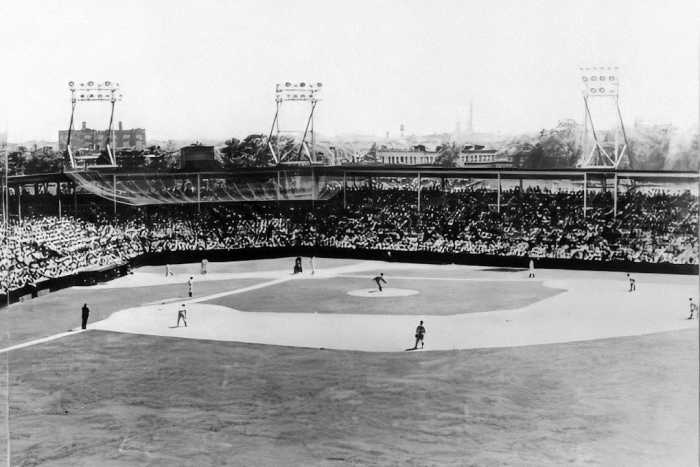BY YANNIC RACK | A group of agitated residents clashed this week with the designers of a memorial to the Triangle Shirtwaist Factory Fire that is planned for the corner of Washington Place and Greene St., where 146 garment workers died in the infamous tragedy more than 100 years ago.
At a town hall meeting organized by Community Board 2 on Tues., Feb. 24, members of the Greenwich Village Block Associations, which includes 33 groups around the neighborhood, sounded off on the memorial design, which many of them see as too obtrusive, and which they criticized for lacking community input.
“It doesn’t keep with the historical nature of the building. It’s a 21st-century application to a 20th-century tragedy,” said Edy Selman, a local resident who later added that the design seemed “Disney-like” to her.
“We’re not looking for another glass-and-chrome obscenity,” added her son.

The memorial plan was drawn up by the Remember the Triangle Fire Coalition, a nonprofit staffed by volunteers that has been involved with the fire’s annual commemoration for years.
The installation project’s two architects, Richard Joon Yoo and Uri Wegman, presented their plan to the residents at the meeting, in hopes of allaying some of the anger directed at them.
“We didn’t want to create a monument, we wanted to create a memorial — something that works on a more personal level,” Wegman said.
The current design calls for the installation of three reflective stainless-steel panels. One of these would run along the sides of the building at 29 Washington Place at pedestrians’ hip level, telling the story of the fire in a single line etched into the metal.
A few feet above this panel would be a second one running parallel to it, with the names of the fire’s 146 victims stenciled into it and reflected in the lower panel. A third reflective panel would run vertically up the building’s corner to its eighth floor.
The relatively simple design, however, which was shown on a scaled-down model of the building at the meeting, garnered unfavorable reviews from the locals.
“How does this memorial honor the victims? It’s just dressing up the building,” complained Mary Johnson, a resident of 14 Washington Place. “It does nothing for me.”
The plan for the memorial started forming years ago, around the time of the fire’s centennial commemoration in 2011. A design was chosen in November 2013, as a result of an international design competition that solicited 170 entries from more than two dozen countries, according to Joel Sosinsky, the coalition’s secretary.
This past December, the group received a promise of $1.5 million in funding from Governor Andrew Cuomo, which would pay for the memorial’s construction. But at least $1 million would still need to be raised in order to pay for an endowment of the installation — a requirement from New York University, which owns the building, now filled with university science labs.
Many residents in surrounding buildings fear the reflections from the memorial’s stainless-steel panels would shine into their apartments across the street.
Even though the architects tried to calm those concerns with the help of a light study that was supposed to show only minimal sun reflection from the panels, the attendees remained unconvinced.
“It’s an assault on our windows,” said resident Barbara Quart. “It’s a really bad choice.”
Anita Brandt, who is a member of the C.B. 2 Landmarks Committee, said she actually liked the design, but would prefer to see it tested on location beforehand, so that the impact could be studied first-hand.
“I think, conceptually, it is quite beautiful,” she told the two architects. “But I think we have to see a full-scale mockup to see if it really works.”
But the main point of contention was that many felt they had been left out of the conversation, in a neighborhood that is used to having a say in all manner of issues — especially when it comes to local landmarks.
“One of the major issues here is that we were never informed,” said Connie Dondore, who heads the tenant association at 15 Washington Place.
“You have no right to just come in and say, ‘This is what we’ll do,’ ” added Johnson.
Sosinsky reminded everyone that the group had come to a community board meeting years ago, and that he had thought the next step would be to present the proposal to C.B. 2’s Landmarks Committee, which gives input on landmarks alterations before they are considered by the city.
He added that the group hoped to bring their design before the city’s Landmarks Preservation Commission before the end of the year.
How the memorial coalition reacts to the residents’ concerns, and whether the current proposal will see significant changes before becoming a formal application, remains to be seen.
“This was largely what I expected coming in here tonight,” Yoo said after the meeting. He added that he appreciated the feedback but thought that a lot of the criticism stemmed from misconceptions.
“A lot of things are up in the air right now,” he said.
C.B. 2 Vice Chairperson Terri Cude, who moderated the meeting, agreed that the ball was in the coalition’s court now.
“We’re hoping to get more community input,” she said afterward. “We may need another meeting on this, we may not.”
“The architects have shown some degree of openness and willingness, so this was a starting place,” Cude added. “This is an important site, but the people who live there have to live with it, too.”































